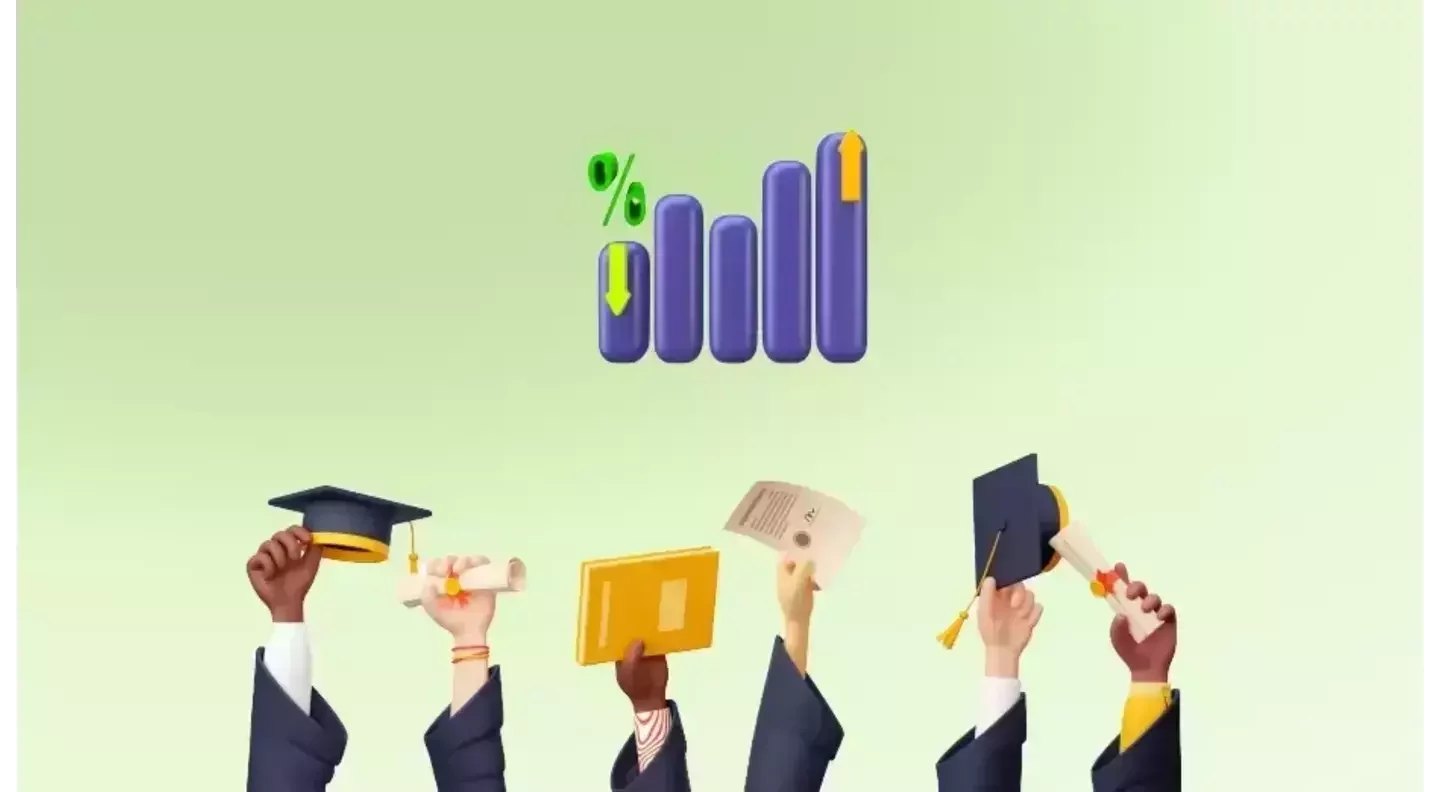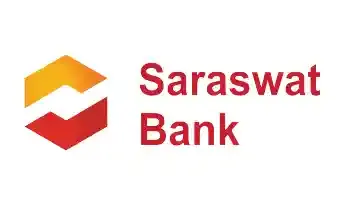Get instant loan offer suitable to your profile !


On this Page:
Discover when student loan interest rates begin, how to manage loans effectively, and choose the best repayment strategy. Your guide to smarter borrowing.
Diving into higher education presents financial hurdles, throwing doubt on many students' academic ambitions. Education loans appear as a beacon, but the road from application to repayment is fraught with difficulties. This article cuts through the clutter and provides simple instructions on how to efficiently manage your college debt. We're here to help you overcome financial obstacles and achieve your academic goals by providing succinct information. Let's simplify your financial path so you can focus on what's actually important: your education.

An education loan provides a financial bridge for students who want to pursue higher education either in their native country or abroad. These loans cover a wide variety of academic expenditures other than tuition, including as books, living expenses, and any course-related equipment. Education loans are usually grouped into two types: secured and unsecured loans. Secured loans require the borrower to provide collateral, such as property or fixed deposits, as security for the loan. This collateral decreases the lender's risk, which frequently results in cheaper interest rates and better loan conditions for the borrower. Unsecured loans, on the other hand, do not demand collateral, making them a more viable choice for people who cannot supply it. However, these typically come with higher interest rates and more stringent repayment conditions due to the increased risk to the lender.
Lenders in the education loan market include public banks, private banks, Non-Banking Financial Companies (NBFCs), and international lenders. Each lender type has its own set of terms, conditions, and benefits.
 Public banks generally offer lower interest rates and longer repayment periods, making them a cost-effective option.
Public banks generally offer lower interest rates and longer repayment periods, making them a cost-effective option.
 Private banks might offer quicker processing times and more flexible loan amounts but usually at higher interest rates.
Private banks might offer quicker processing times and more flexible loan amounts but usually at higher interest rates.
 NBFCs are known for their flexible eligibility criteria and quick disbursement processes, catering especially to those who might not meet the stringent requirements of banks.
NBFCs are known for their flexible eligibility criteria and quick disbursement processes, catering especially to those who might not meet the stringent requirements of banks.
 International lenders, though less common, specialize in loans for studying abroad and might provide currency-specific loans with competitive terms for international students.
International lenders, though less common, specialize in loans for studying abroad and might provide currency-specific loans with competitive terms for international students.

Understanding when student loan interest rates start is critical for financial planning. Regardless of the repayment option chosen, it is crucial to understand that interest rates on school loans begin to accrue on the day they are released. This is a key principle of school loans that applies to all sorts of lenders and loans. The accrual of interest throughout the study and grace periods implies that the total amount repayable will increase over time, even before the borrower begins to make regular repayments.
This initial period, prior to the start of regular payments, emphasizes the necessity of understanding when student loan interest rates begin as part of the overall loan cost. Borrowers should be aware of interest rates and how they compound over time, since this will have a substantial influence on the total amount owed throughout the term of the loan. Early awareness and preparation may lead to more educated borrowing decisions, possibly saving thousands in interest throughout the loan's lifetime.

Understanding about the student loan interest rate is important because this would help you to manage the debt and repayment plan effectively. Interest rate is directly linked to the amount you will be paying over the tenure as agreed upon by the lender.
Making educated judgments about when and how much to pay for your loans can be aided by knowing when interest begins to accrue. It can also assist you in comprehending the possible advantages of choices such as refinancing your loans to a reduced interest rate or paying only interest while enrolled in school.
Read More About: Understanding Partial Interest in Education Loan

The moratorium period is an important component of education loans, giving borrowers a break from loan repayments while still in school or shortly after graduation. This term normally lasts the entirety of the course plus six to twelve months after graduation, giving graduates time to find work before commencing their repayments. There are various advantages and disadvantages to the moratorium period, which are outlined below:
| Benefits | Drawbacks |
|---|---|
|
Provides financial relief during studies and job search. |
Interest accrues during this period, increasing loan costs. |
|
Allows graduates to start repaying loans with employment. |
This may lead to a higher total repayment amount over time. |
|
Reduces immediate financial stress for students and families. |
Misunderstanding its impact can lead to financial surprises. |
The moratorium period is especially useful for students who require time to transfer from study to full-time job without the immediate strain of loan repayments. However, because interest accrues throughout this period, the final amount payable will be more than if repayments began earlier. Understanding this balance is critical to good debt management.

There are different repayment options that you can opt for while planning your own repayment strategy. There is no one-size-fits-all approach. It is always recommended that you analyze your case and then choose the best option for yourself. The different strategies are -
 Partial interest payment during moratorium: This technique entails making payments toward the loan's interest component during the moratorium period. It helps to reduce the total interest load because unpaid interest is not capitalized. While this strategy can reduce the overall loan cost, it still needs borrowers to have some financial resources during their education, which may not be realistic for everyone.
Partial interest payment during moratorium: This technique entails making payments toward the loan's interest component during the moratorium period. It helps to reduce the total interest load because unpaid interest is not capitalized. While this strategy can reduce the overall loan cost, it still needs borrowers to have some financial resources during their education, which may not be realistic for everyone.
 Borrowers pay the full interest amount during the moratorium, which prevents interest capitalization and keeps the loan total from growing. This technique greatly lowers the total cost of borrowing, but requires a greater financial commitment throughout academic pursuits.
Borrowers pay the full interest amount during the moratorium, which prevents interest capitalization and keeps the loan total from growing. This technique greatly lowers the total cost of borrowing, but requires a greater financial commitment throughout academic pursuits.
 EMI during moratorium: Some lenders may allow you to start making monthly EMI payments that include both principle and interest during the moratorium period. This technique has the lowest overall loan cost, but it is the most financially demanding during the moratorium.
EMI during moratorium: Some lenders may allow you to start making monthly EMI payments that include both principle and interest during the moratorium period. This technique has the lowest overall loan cost, but it is the most financially demanding during the moratorium.
 EMI After Moratorium: The most frequent repayment option is to begin full EMI payments after the moratorium period, which allows time to build financial stability before beginning repayments.
EMI After Moratorium: The most frequent repayment option is to begin full EMI payments after the moratorium period, which allows time to build financial stability before beginning repayments.
Wrapping up, navigating education loans doesn't have to be daunting. With clear insights and the right support, your academic dreams are well within reach. For personalized guidance on loans, lenders, and repayment strategies, GyanDhan is your go-to. They simplify the loan process, ensuring you find the best fit for your education journey. Curious about your options? Connect with GyanDhan and take a step closer to your educational goals today.

In India, education loan interest rates can be either fixed or variable, depending on the lender's policies. Public banks often offer loans with floating rates, which may change with the market conditions, while private banks and NBFCs might offer both fixed and floating rate options. Borrowers should check with their specific lender to understand the nature of the interest rate on their loan.
Interest rates on education loans in India are determined by various factors including the lender's base rate, the borrower's academic record, the institution being attended, and the collateral provided, if any. Some banks also offer special concession rates to female students or for students attending premier institutions.
Yes, interest rates on education loans from Indian lenders can sometimes be negotiated, especially if the borrower has a strong academic background, offers collateral, or opts for a loan from a bank where they have a prior relationship. Additionally, some banks may offer lower rates during special promotions or for students admitted to top-tier institutions.
The moratorium period for Indian education loans is a loan holiday offered by lenders during the course duration and sometimes for an additional 6 to 12 months after course completion. Interest accrues during this period, but repayment of the principal is suspended. For subsidized loans, the government might pay the interest during the moratorium, but this feature is more specific to government-backed education loan schemes.
Indian borrowers can manage or reduce the impact of interest on education loans by opting to pay simple interest during the study period, securing scholarships to reduce the borrowed amount, and choosing lenders with lower interest rates. Additionally, making use of government subsidies for education loans, where applicable, and prepaying the loan during the moratorium period can also help reduce the overall interest burden.
There is no specific period from which the education loan interest starts. The interest begins accumulating on your loan from the month following your disbursement. The time period for when you start repaying the loan varies; some loans require interest payments during the moratorium period, while others do not.
Interest on student loans typically accrues daily and is added to the loan balance monthly. The exact frequency can vary depending on the lender's terms.
To avoid interest on student loans, consider paying off the interest during the moratorium period or making extra payments whenever possible. Additionally, look for loans with interest subsidies or scholarships that cover interest costs.
Check Your Education Loan Eligibility

Ask from a community of 10K+ peers, alumni and experts
Trending Blogs
Similar Blogs

Network with a community of curious students, just like you
Join our community to make connections, find answers and future roommates.. Join our CommunityCountry-Wise Loans
Best Lenders for Education Loan

ICICI Bank

Axis Bank

Union Bank

Prodigy

Auxilo

Credila

IDFC

InCred

MPower

Avanse

SBI

BOB

Poonawalla

Saraswat